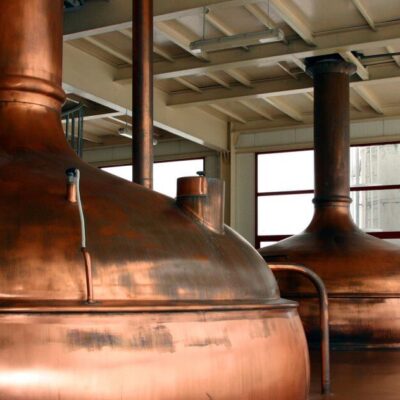What makes us happy?

The answer, it would seem, is simple – Love! In reality, it’s much more complicated than that. I’m afraid to talk about human relationships at all. There is a lot of confusion and illogic here. It would seem that there is an ideal woman, and there are no feelings for her, except admiration. And between an “ordinary”, unremarkable woman and you suddenly there is a connection, like a welding arc. I don’t know how to explain it…
With beer, it’s a little easier. We all know that “Beer is just one more proof that God loves us and wants us to be happy!”. The love of beer is also difficult to break down into its components, but scientists around the world are trying.
Thus, the University of Nuremberg (Friedrich-Alexander-Universität Erlangen-Nürnberg) analyzed 13,000 food ingredients to determine whether they activate the brain’s pleasure center. The winner was unexpectedly Hordenine, an ingredient in barley malt and beer.
There are foods that make us happy, or at least make us feel good. In technical language, such foods are called “hedonic foods”. There is a complex biochemical process behind it. When you eat such food, it activates certain parts of the brain where the Dopamine D2 receptor is located.
Researchers in the Department of Food Chemistry at FAU, asked themselves: are there any specific ingredients in foods that activate the dopamine receptor? Together with colleagues at FAU’s Center for Computational Chemistry, they used a virtual screening method. It is used in pharmaceutical research. During virtual screening, food ingredients are not examined in the laboratory, but on a computer. Thus, unlike classical screening methods, researchers can examine all possible existing food ingredients rather than a small number.
First, the scientists created a virtual database of 13,000 molecules found in food products. From this database, it was necessary to find those molecules that correspond to the dopamine D2 receptor – the corresponding “key to the keyhole”. The computer began calculating which molecules were likely to interact with the dopamine D2 receptor. Only 17(!) out of 13,000 were chosen, and the research continued with them.
The most promising test results showed the substance hordenine, a component of barley malt and beer. Like dopamine, hordenine activates the dopamine D2 receptor – with one important difference: it works through a different signaling pathway. Hordenine, unlike dopamine, activates the receptor exclusively through so-called G-proteins, which can lead to a longer-lasting effect on the pleasure center.
German researchers have once again confirmed that in addition to its many medicinal properties, Beer is an inexhaustible source of happiness for all of us and that’s great!















